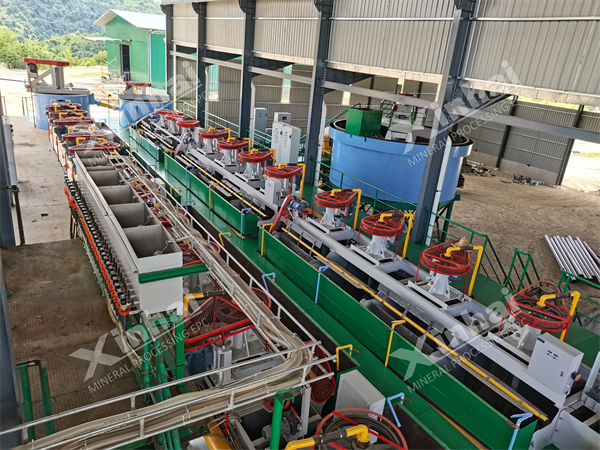The lead-zinc ore flotation process is a complex series of steps designed to separate lead and zinc minerals from the gangue (unwanted material) present in the ore. The process typically involves the following stages:
1. Grinding: The lead-zinc ore is crushed and ground into a fine powder to facilitate the liberation of valuable minerals from the gangue.
2. Conditioning: The ground ore is mixed with water and flotation reagents, including collectors, frothers, and modifiers. These chemicals help make the desired minerals hydrophobic (repel water) while keeping the gangue minerals hydrophilic (attracted to water).

3. Flotation: The conditioned slurry is introduced into flotation cells, where air is bubbled through the mixture. The air bubbles attach to the hydrophobic lead and zinc minerals, causing them to float to the surface as a froth. Meanwhile, the hydrophilic gangue minerals remain in the pulp.
4. Froth Overflow: The froth containing the floated lead and zinc minerals overflows from the top of the flotation cell and is collected as a concentrate.
5. Dewatering and Further Processing: The concentrate undergoes dewatering to remove excess water, often through processes like thickening, filtration, or centrifugation. The dewatered concentrate may then be dried to reduce moisture content.
6. Smelting: The dried concentrate is then smelted in a furnace to extract the lead and zinc metals. This involves heating the concentrate to high temperatures in the presence of oxygen or a reducing agent, causing the metal sulfides to react and form metal oxides or metal alloys.
7. Refining: The lead and zinc metals obtained from smelting may undergo further refining processes to achieve purer metal products suitable for various industrial applications.
Throughout the flotation process, careful control of factors such as pH, pulp density, air flow rate, and reagent dosage is crucial to optimize separation efficiency and product quality. Additionally, continuous research and development efforts aim to improve the process's effectiveness, reduce environmental impact, and increase resource recovery.